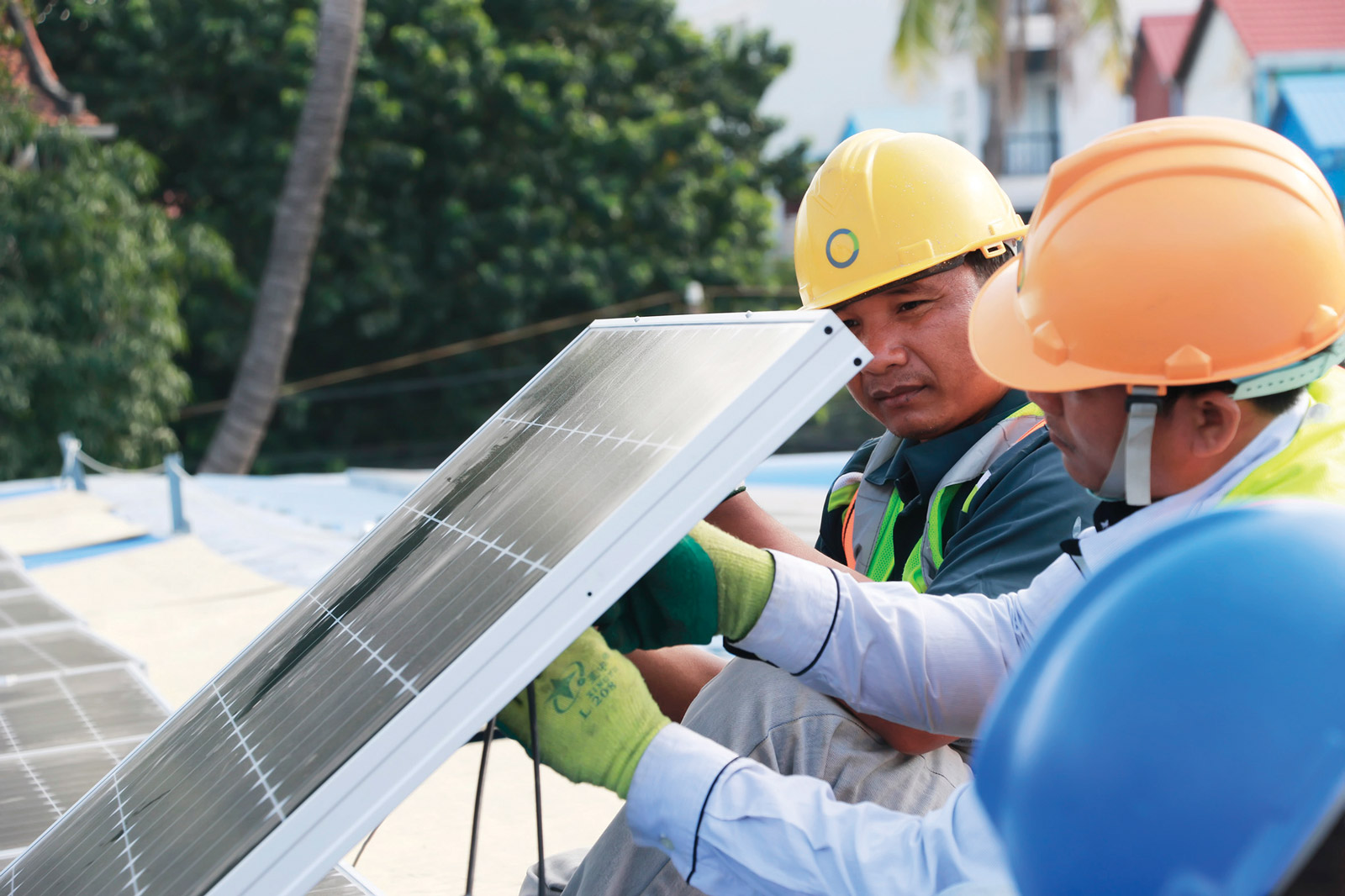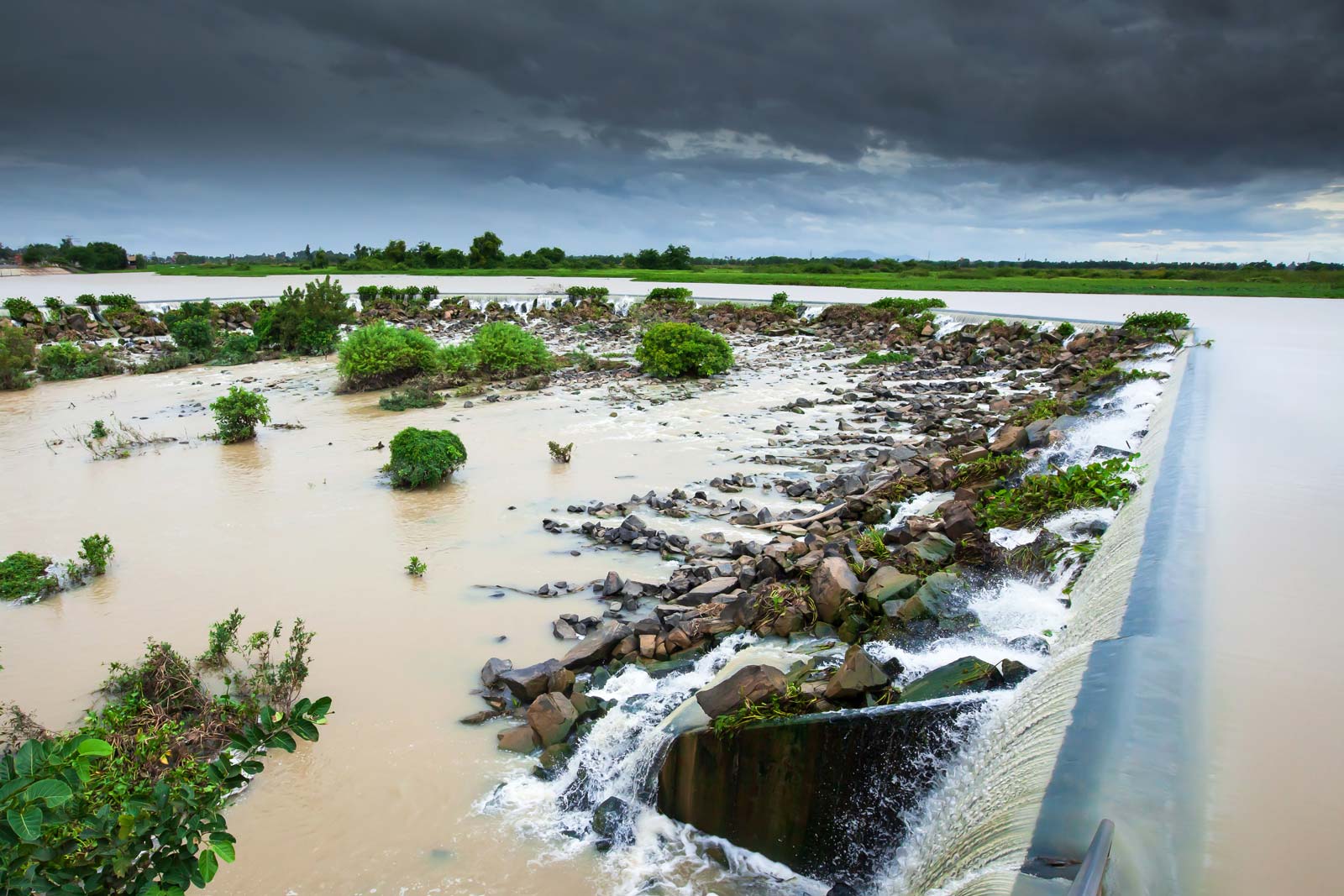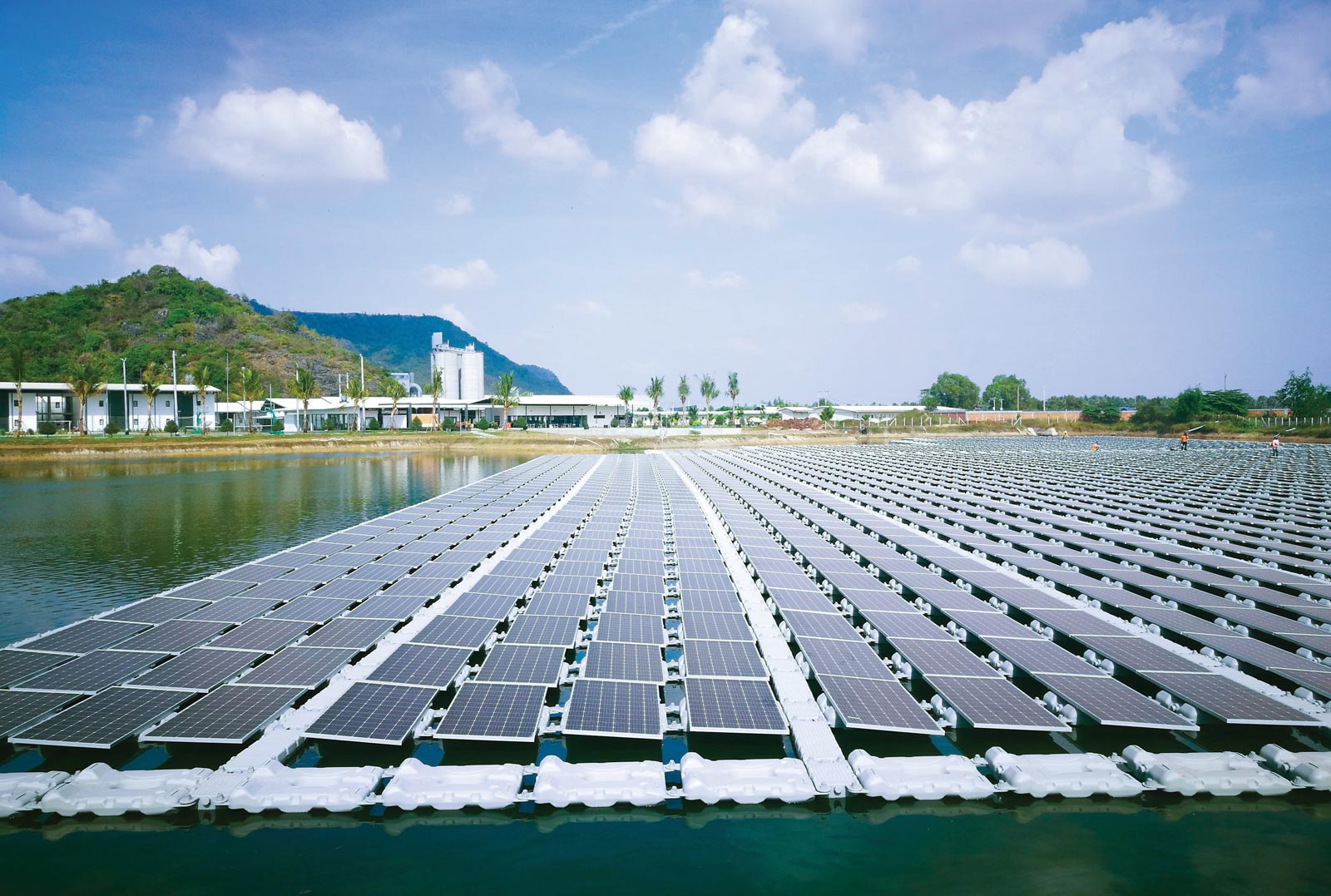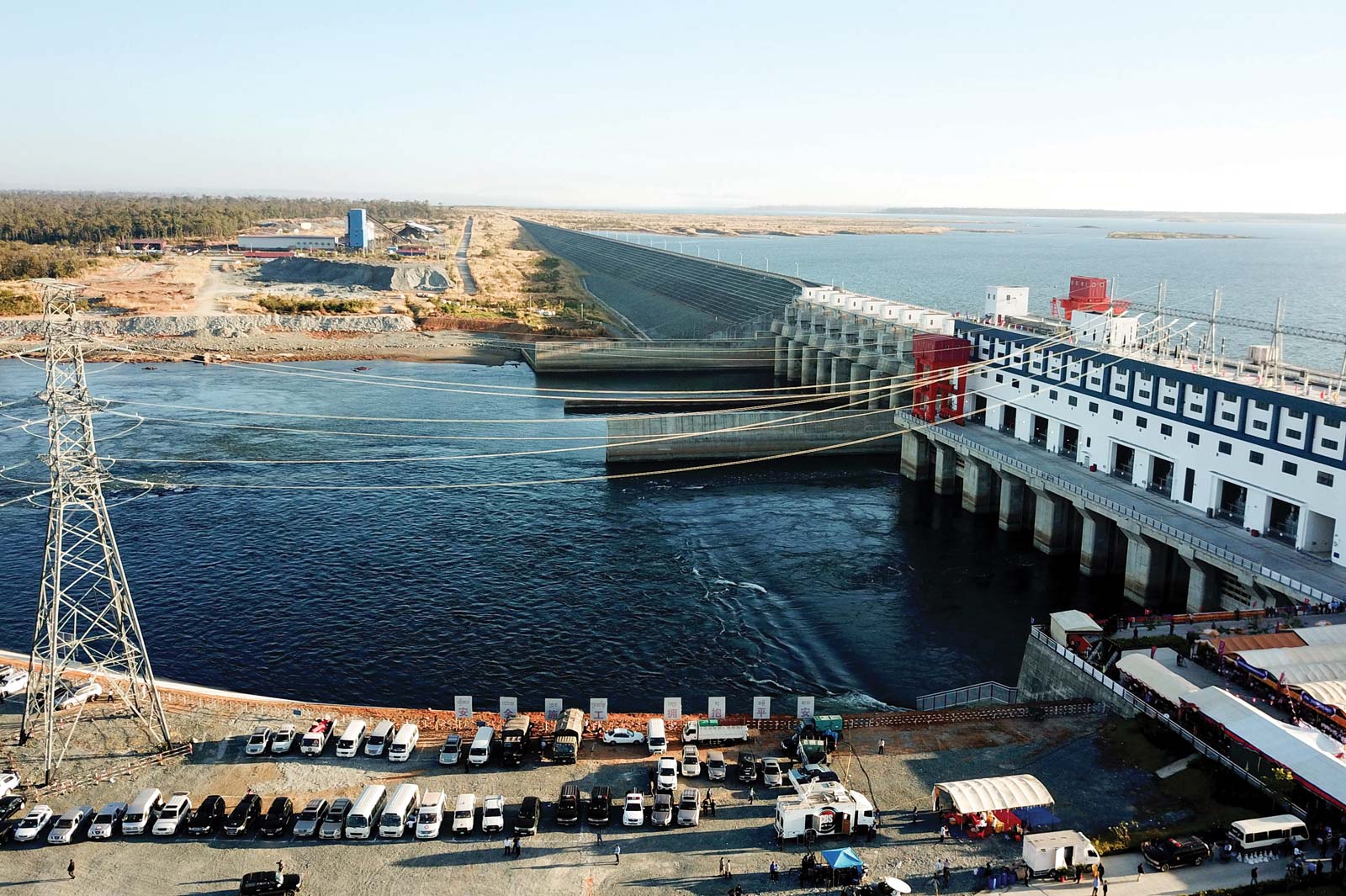This article is part of our coverage of Clean Energy Week in Cambodia. You can read the full programme here.
Cambodia has more to fear than most nations from the impending climate crisis. A 2015 United Nations report predicted that Cambodia would be the world’s ninth-most vulnerable nation for natural disasters brought on by rising temperatures – mainly in the form of the droughts and floods that have become an all-too-common occurrence in the Kingdom, costing lives and livelihoods every year.
And even when it’s not a matter of life and death, the stakes are still high. Last dry season, Cambodia was rocked by rolling blackouts brought on by low water in the hydrodam reservoirs and higher than expected electricity demands from new developments. In total, Cambodia was short 400MW. For the countless small business owners as well as larger manufacturers driving Cambodia’s booming economy, the losses were incalculable.
Cambodia certainly seems to be betting on a bright future. In the past year, the total amount of installed solar rose to 120MW
But while the government has moved to secure a series of power purchase agreements with neighbouring countries, much of the energy generated by these negotiations will not come online for as long as five years. Instead, the Kingdom is increasingly looking at shorter-term solutions to its energy needs – ones that can power Cambodia’s development without driving further climate collapse that could haunt the nation for decades to come.
And Cambodia certainly seems to be betting on a bright future. In the past year, the total amount of installed solar rose to 120MW, at least 30MW of which came in the form of rooftop solar systems. Chief among this push has been the installation of a massive 30,000 grid-tied panels from Chip Mong Insee Cement ranging from curved rooftop panels to those designed to float on water.

Perhaps even more significant than this infrastructure development has been the progress towards clarifying a regulatory framework for solar generation.
In January 2018, the Electricity Authority of Cambodia (EAC) enacted a set of regulations allowing consumers to install their own solar power systems. Medium- and high-voltage consumers will be able to install systems while still being connected to the national grid – provided that they generate less than 50% of the capacity they have agreed to buy from the national provider. The EAC has announced new tariffs to start in 2021 for industrial and commercial customers that set monthly peak demand charges and kWh price. This will improve the case for rooftop solar projects.
As far as next steps go, a future development that could help significantly would be regulation around a feed-in-tariff – that is, a price on electricity supplied back into the grid. Here, Cambodia would be building on the success that such guarantee in other ASEAN countries including Thailand, Vietnam and the Philippines.
Indeed, solar power is fast taking off in the Kingdom. Last month, four solar projects with a combined capacity of 140 MW were approved by the Council of Ministers across Pursat, Battambang, Banteay Meanchey and Svay Rieng. This brings the total amount of large scale solar projects that are either built, under construction or approved to 410MW. By comparison the total generation capacity in Cambodia in 2018 was 2,208MW.
The arguments for solar power as a solution to Cambodia’s energy woes are strong. Above all is price. Cambodia’s first solar auction set an electricity price at $0.03877/kWh – a record low for Southeast Asia according to the Asian Development Bank (ADB) and less than half the cost of coal power.
ADB office of public-private partnerships director Siddharta Shah said that the tender’s success showed the sheer power of competition.
“This is a new era for renewable energy development in Cambodia and the region, and particularly for solar power generation,” he said. “This is good news for EDC and the people of Cambodia. We believe more governments in the region will adopt auctions as a strategy to procure renewable energy generation capacity and this structure and tariff will serve as a benchmark for future projects.”
“This is a new era for renewable energy development in Cambodia and the region, and particularly for solar power generation”
And it’s not just cheaper – it’s cleaner. Renewable energy such as solar power releases no direct carbon emissions, while coal and fossil fuels contribute significantly to sulphur-oxide and nitrogen-oxide pollution linked to more than 7,000 deaths every year.
As good as clean energy is for the planet, it’s good news as well for workers. A renewables-led pathway proposed by McKinsey and Company for neighbouring Vietnam was projected to create more than twice as many jobs as the current emphasis.
And for a nation like Cambodia that has struggled to meet the energy demands of its citizens, the speed with which solar panels can be installed and scaled up makes it a quick fix for the dry-season blackouts have struck the Kingdom in past years.


Not that solar power doesn’t come with its own challenges – as you might guess, it tends to falter when the sun stops shining. Fortunately, Cambodia is in a uniquely strong position to pair its burgeoning solar power capacity with its existing hydropower infrastructure.
During the dry season, solar reigns supreme: Cambodia has almost six peak sunlight hours a day and an average solar irradiation of 5.0 kWh/m2 per day, placing it among the world’s top solar resources. When the water level runs low in dry season, solar power can run during the day, with hydropower taking over at night. Here, even more efficiencies can be made: when floating solar panels are installed directly on the reservoir, no storage is needed, as the energy from them can be fed directly into the dam’s system and on into the grid.
“Mini-grids are now one of the core solutions for closing the energy access gap… we are working with countries to mobilise public and private investment”
For remote areas without access to the national grid, renewable energy mini-grids using batteries have proved a viable option – namely, small renewable energy systems that do not need to be connected to the rest of the country. These are typically composed of a source of renewable energy – such as solar, wind, biomass or hydropower – combined with batteries, a diesel generator or both.
Ricardo Puliti, a senior director of energy and extractives at the World Bank, said that these self-contained systems were ideal for nations such as Cambodia that still fell short of providing equal access to energy regardless of location.
“Mini-grids are now one of the core solutions for closing the energy access gap … we are working with countries to actively mobilise public and private investment,” he said.

While Cambodia’s recent foray into wind and solar power to shore up its long-running reliance on hydropower dams is promising, there is no single solution to the challenges brought on by a warming world. Institute for Energy Economics and Financial Analysis energy finance analyst told the ASEAN Post that renewable energy solutions were giving government’s across the region the power to take their energy needs into their own hands.
“Solar, wind, run-of-river hydro, geothermal, biogas, and storage are competitive, viable domestic options that can be combined to create a cheaper, more diverse and secure energy system,” she said.


